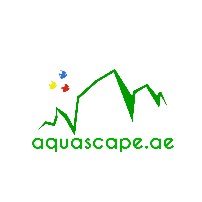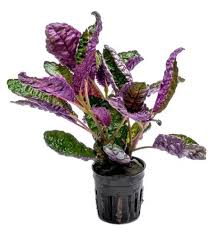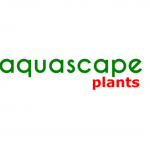Hemigraphis Colorata / Purple Waffle Terrarium Plant
Hemigraphis colorata, commonly known as Purple Waffle Plant, is a popular terrestrial and semi-aquatic plant often used in paludariums, terrariums, and occasionally in aquariums. It is prized for its striking purple-green foliage and textured leaves. Here’s a detailed care guide to help you grow and maintain this unique plant:
1. Overview
- Scientific Name: Hemigraphis colorata
- Common Name: Purple Waffle Plant, Red Ivy
- Origin: Southeast Asia
- Difficulty Level: Easy to Moderate
- Growth Rate: Moderate
- Light Requirement: Medium to Bright Indirect Light
- CO2 Requirement: Not required (for terrestrial or semi-aquatic growth)
د.إ25.00
Hemigraphis colorata, commonly known as Purple Waffle Plant, is a popular terrestrial and semi-aquatic plant often used in paludariums, terrariums, and occasionally in aquariums. It is prized for its striking purple-green foliage and textured leaves. Here’s a detailed care guide to help you grow and maintain this unique plant:
1. Overview
- Scientific Name: Hemigraphis colorata
- Common Name: Purple Waffle Plant, Red Ivy
- Origin: Southeast Asia
- Difficulty Level: Easy to Moderate
- Growth Rate: Moderate
- Light Requirement: Medium to Bright Indirect Light
- CO2 Requirement: Not required (for terrestrial or semi-aquatic growth)
2. Growing Conditions
- Environment: Best suited for terrestrial or semi-aquatic setups (e.g., paludariums, terrariums). It can be grown submerged in aquariums but may not thrive long-term.
- Temperature: 65–80°F (18–27°C). Avoid extreme temperature fluctuations.
- Humidity: Prefers high humidity (60–80%). Ideal for terrariums or enclosed setups.
- pH Level: Slightly acidic to neutral (6.0–7.0) if grown in water.
3. Lighting
- Medium to Bright Indirect Light is ideal for vibrant foliage.
- Avoid direct sunlight, which can scorch the leaves.
- In low light, the plant may lose its vibrant purple coloration and become leggy.
4. Substrate and Planting
- Substrate: Use a well-draining, nutrient-rich soil mix for terrestrial growth. For semi-aquatic setups, plant in a mix of soil and aquatic substrate.
- Planting:
- Plant the roots in the substrate, ensuring the crown is above the soil to prevent rot.
- Space plants 6–8 inches apart to allow room for growth.
5. Watering and Humidity
- Watering: Keep the soil consistently moist but not waterlogged. Allow the top inch of soil to dry slightly between waterings.
- Humidity: Maintain high humidity by misting regularly or using a humidity tray. In terrariums, the enclosed environment will naturally provide high humidity.
6. Fertilization
- Use a balanced liquid fertilizer diluted to half strength every 2–4 weeks during the growing season (spring and summer).
- Reduce fertilization in fall and winter when growth slows.
7. Pruning and Maintenance
- Pruning: Trim back leggy or overgrown stems to encourage bushier growth.
- Cleaning: Remove dead or yellowing leaves to keep the plant healthy and prevent pests.
8. Common Issues
- Leaf Browning or Crisping: Often caused by low humidity or underwatering. Increase humidity and ensure consistent moisture.
- Pests: Watch for spider mites, aphids, or mealybugs. Treat with insecticidal soap or neem oil if needed.
- Fading Color: Insufficient light can cause the plant to lose its vibrant purple hue. Move to a brighter location with indirect light.
9. Propagation
- Propagate through stem cuttings:
- Cut a healthy stem with at least 2–3 nodes.
- Remove the lower leaves and place the cutting in water or moist soil.
- Roots should develop in 2–4 weeks. Once rooted, transplant into soil or substrate.
10. Uses in Aquariums and Paludariums
- While Hemigraphis colorata is primarily a terrestrial plant, it can be used in paludariums or ripariums where its roots are submerged, and the foliage remains above water.
- In fully submerged aquariums, it may struggle to survive long-term and is not recommended.
11. Tips for Success
- Provide consistent moisture and high humidity for optimal growth.
- Avoid placing the plant in direct sunlight or overly dry environments.
- Regularly prune to maintain a compact, bushy shape.
By following these guidelines, you can enjoy the vibrant foliage of Hemigraphis colorata in your terrarium, paludarium, or indoor garden.








There are no reviews yet.